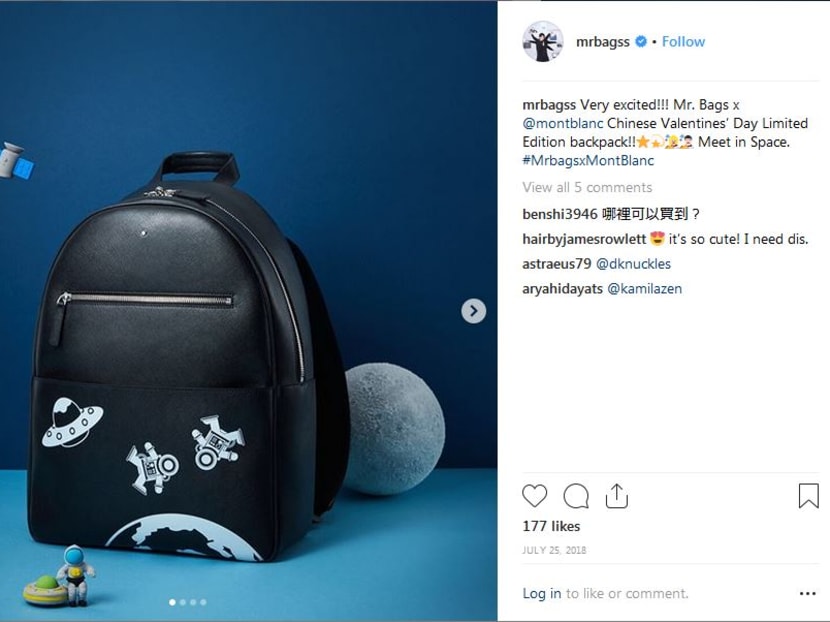Luxury brands refashion to court new breed of digitally savvy high earners
SINGAPORE — There is a new generation of luxury consumers in town and they are known as the High-Earners-Not-Rich-Yet (Henrys).

Montblanc has collaborated with Mr. Bags, a Chinese fashion blogger with 3.5 million followers on Weibo, on a limited edition collection of women’s handbags.
SINGAPORE — There is a new generation of luxury consumers in town and they are known as the High-Earners-Not-Rich-Yet (Henrys).
These digital natives are big spenders and luxury brands, which were once seen as a mark of elitism and wealth, are now trying to refashion themselves into sustainable, cause-conscious names to appeal to this rising consumer class.
WHO ARE THEY?
This consumer group has an average age of 43; its members earn between US$100,000 (S$135,500) and US$250,000 a year and have investable assets of less than US$1 million, according to data analytics and technology firm Equifax and Deloitte Global.
Deloitte Global’s network of firms deal with industry insights and audit, financial advisory, rish management and tax services.
“These consumers are digitally savvy, love shopping online and are big spenders, in particular, the millennial Henrys”, said Deloitte’s report.
WHAT DO THEY WANT?
Luxury brands are trying to change their image in order to cater to this younger group of consumers, the report noted.
While the luxury industry is usually associated with excessive consumerism and extremely high costs, this new group of affluent consumers are more “socially and environmentally conscious, and so have higher expectations of luxury brands to be more sustainable and ethical in their production processes”, it said.
Luxury brands such as Burberry and Gucci are jumping on this bandwagon in order to appeal to these customers.
In September last year, British fashion label Burberry announced that it would expand its practice of recycling, repairing and donating unsold products. It would also end its practice of burning unsold clothes, bags and perfume, and stop using real fur after the brand was criticised by environmentalists.
Some luxury brands are also catering to younger consumers who want more personalised products.
The report cited Italian label Gucci’s launch of a do-it-yourself service in 2016 that allows customers to personalise a selection of products and Hugo Boss’ strategic business plan for 2022 which aims to grow profits by providing more bespoke products.
HOW TO COURT THEM
The use of social media is a big part of the luxury brands’ marketing strategies as younger consumers increasingly use online platforms such as Instagram, YouTube and Facebook to express their brand preferences, the report said.
Instead of unveiling collections at international fashion shows, some brands choose to do so via their social media platforms. For instance, French luxury firm Louis Vuitton engages its social media followers by giving them exclusive sneak peeks into its new products launches.
Another strategy involves developing relationships with influencers and niche bloggers, who “advocate the brand within interested communities”.
In July last year, German luxury goods company Montblanc collaborated with Mr Bags, a Chinese fashion blogger with 3.5 million followers on the country’s biggest social media platform Weibo, on a limited edition collection of women’s handbags.









